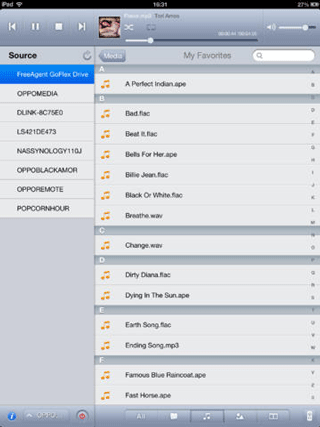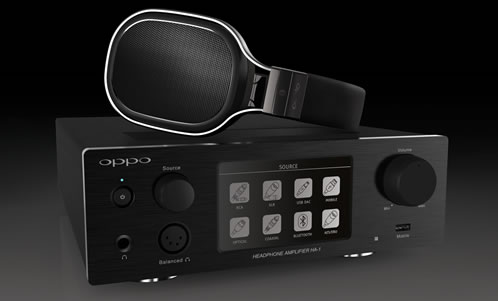|
|
||||
But OPPO seems to have discovered that Darbee doesn't dumb things down. "After evaluating the technology carefully and getting feedback from users of the Darbee 'Darblet' product, we were convinced that the benefit outweighs the concerns," Liao said, noting that "when used properly, it provides a better movie watching experience." That's high praise, indeed.
Liao said OPPO decided to offer the technology as special "Darbee Editions" mainly because video enhancement is still "largely based on personal taste." They also took into consideration the significant cost of implementing the Darbee technology. "If we put it in our standard model, some customers may not like the extra cost if they are not interested in video enhancement," he said. Makes sense.
Owners of the current BDP-103 and BPD-105 can't retrofit Darbee into their units because, Liao said, "the data rate of the video signal is so high that we cannot put the Darbee processing on an add-on board and still maintain signal quality." He suggested that customers who already have the standard players and are interested in the Darbee technology should look into DarbeeVision's standalone Darblet, which he said can be inserted into the HDMI link between the OPPO's output and the display device's input.
Branching out…
The other big news out of OPPO digital is the PM-1 and HA-1, two products Liao said are in active development even as you read this. The products aren't finalized yet, so they don't have pricing information available, but Liao said their estimated availability is late-March to mid-April, barring no unforeseen delay.
The PM-1 is an audiophile-grade Planar Magnetic headphone, the idea for which came when the company was designing the BDP-105's built-in headphone amplifier (yeah, that player does just about everything except slice bread!). "We bought many headphones to test on the BDP-105," Liao reported, saying that during their tests the planar magnetic types always sounded better to many of the "OPPO-nents" (my term, not theirs!) involved in the testing. "However the existing products in this category are pretty much all very heavy, have low sensitivity, and are hard to drive," he said.
OPPO's ace in the hole came about through networking. "We happen to know someone who has been designing planar magnetic ribbon tweeters for many years and holds the solution to weight reduction, sensitivity improvement and reliability for planar magnetic drivers," Liao said. "Gradually we formed the idea that with this know-how and our capability in manufacturing, we can build a nice pair of headphones that retain the great sound of planar magnetic drivers but resolve the weight and sensitivity issues."
Two years later, the product is nearly ready for market.
The other new product, the HA-1 headphone amplifier, is kind of a BDP-105 without the disc player. Why, you ask? "Many of our customers buy our players to use as audio-only players," Liao told me, which surprised me not a whit since I'm quite familiar with their products' excellent audio performance. "This started way back but we got a lot of feedback from (users of two earlier OPPO Blu-ray players). They wanted to take advantage of the excellent audio performance and asked for audio inputs." So OPPO added HDMI, coaxial, optical and USB DAC inputs to the BDP-105, along with the built in headphone amp.
High resolution audio finally appears to be taking off, even though DVD-Audio and SACD remain niche markets (note that the OPPOs play both formats without breaking a sweat). Some recording labels are now offering content via high-res downloads that can stretch your audio system to its limits, and some of them sound spectacular. Check out 2L or Reference Recordings for a couple of examples of different ways to do it - or this link to a selection of Demo Tracks by DSD Pioneer Musician David Elias that OPPO provides. And OPPO has been adding support for more lossless audio formats into its players (for example, WAV, FLAC, ALAC, DSD etc.) so owners can play those high-res files easily.
Using the BDP-105 as an example, you can often leave the high res tracks on your home network and access them directly through the player, and the sound quality (remembering the "garbage in, garbage out" qualifier) can be nothing short of spectacular. You can also burn files to create a data disc and chances are OPPO will play them. The way Liao put it, "the players have so many features they become a Swiss army knife for audio and video playback." He said the company intends to keep its players as its core product offering, which is good news, indeed.

There's an app for that…
Another handy thing OPPO has done is to release an app for smartphones and/or tablets that actually could be a Godsend for those with projection TV's they don't want to have to fire up if they're only listening to music - thereby using valuable lamp time when they shouldn't actually need to. I've been using a secondary LCD screen in my home theater application for such instances, but OPPO's free MediaControl app facilitates navigating your media files and duplicates the players' remote control as well.
Even if you don't have a projector, the app can help make playing files on your network "swipe and touch easy" compared to using the player's remote control to scroll up and down the various folders - a method that works fine but which, compared to the app, is rather clunky.
As for the headphones and the dedicated headphone amplifier that are coming, Liao described them as a natural extension into the personal audio field. "The players are great and versatile," he said (and he's right!), "but some customers want simpler products with easier operation and even better performance."
In the case of the HA-1 headphone amplifier, "we took the proven DAC and analog driving stage from the BDP-105 and expanded upon it to form the core of the HA-1," Liao said. So unlike the headphone amplifier built into the BDP-105 (which Laio noted drives most headphones with "sufficient volume"), the HA-1's Class A power amplification circuit's discrete components help it work with headphones that are harder to drive and require more power. OPPO also added analog audio inputs so you can use the HA-1 with sources such as turntables, which are making a bit of a comeback right now.
And like the BDP-105, you'll be able to use the HA-1 as a standalone DAC (digital to analog converter) and stereo pre-amplifier, which could come in handy if you're building a high performance stereo system. Not only that but, as I mentioned above, if you're assembling the system from scratch, you can eschew buying a separate preamplifier and thereby save yourself a few bucks. I have a feeling that most people who are building an audiophile system such as this won't be too concerned with cutting fiscal corners, but it's there if you need it.
No matter how you slice it, it looks like an interesting year for fans of OPPO Digital. And it promises to be an "ear opening" experience.
Copyright 2014 Jim Bray
TechnoFile.com
Jim Bray's columns are available through the TechnoFile Syndicate.

 OPPO Digital upping its own ante with new products
OPPO Digital upping its own ante with new products